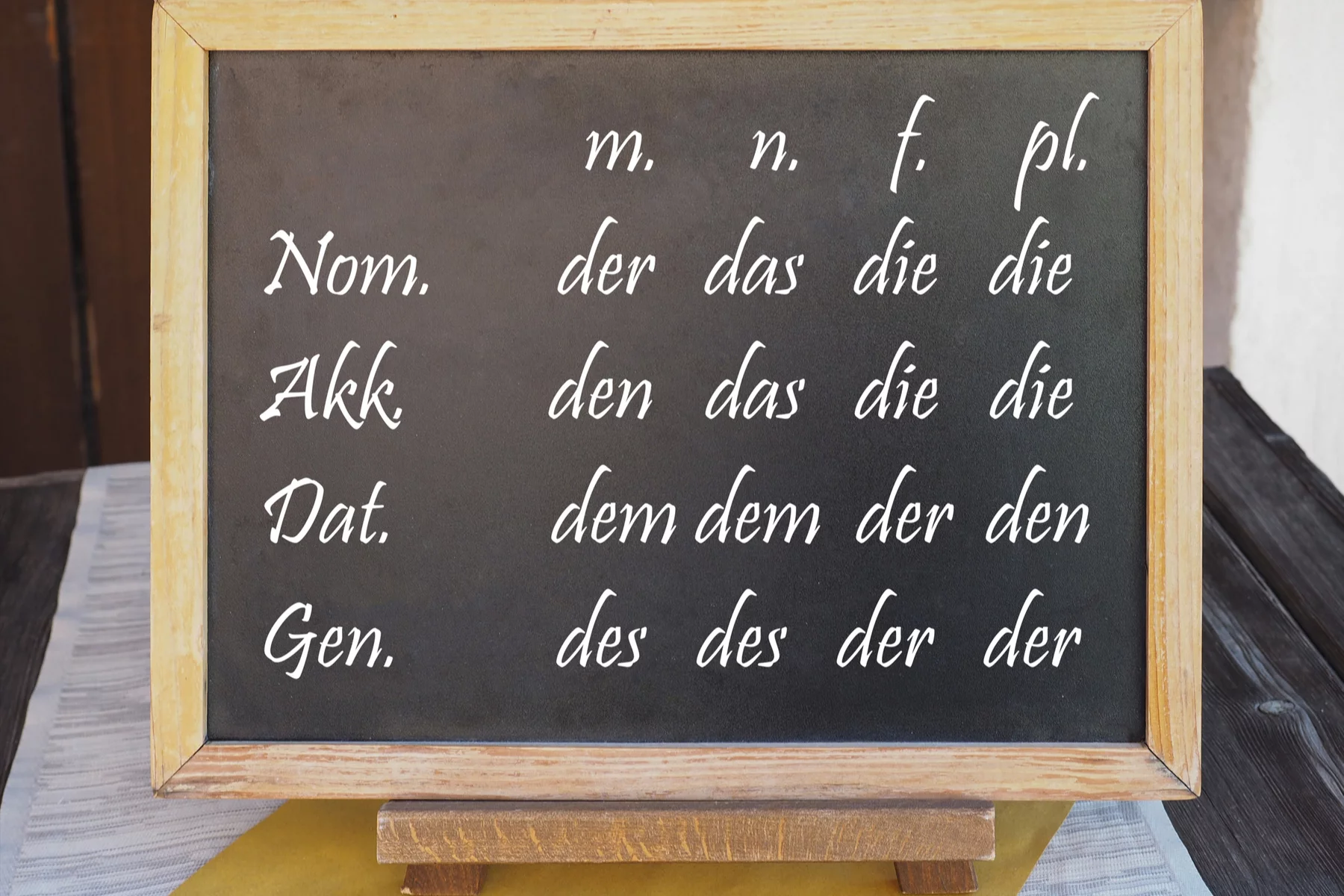Naturally, one of the first things that expats will be thinking about when relocating to a new country is getting to grips with the local lingo. And for those moving to Austria, this will be German. As the official language of the country, German is widely spoken throughout Austria and is used within the world of business and education. Therefore, if you are moving to the beautiful alpine country, you’ll hear it spoken every day.
To help you learn more about German, this guide explains the origins and characteristics of the language and provides the following information:
Babbel
Start chatting like a local with Babbel. One of the most popular language-learning apps around, it offers many courses, resources, and live online classes. And, with 13 new languages to choose from, Babbel will have the right course for you.
What languages are spoken in Austria?
As the official language and mother tongue of Austria, German is spoken by around 98% of the country’s population. That said, there are variations in the standard German that is spoken across the regions. There are also distinct differences between the many regional dialects within the country.

Aside from German, Croatian, Hungarian, Slovenian, and Turkish are spoken by the various minority groups living in Austria. Slovenian, for instance, is an official language in Carinthia. Interestingly, some bilingual schools in Austria teach Slovenian, Croatian, and Hungarian alongside German.
Where the German language is spoken worldwide
Around 130 million people worldwide speak German as their native language. It is the official language of Austria, Germany, Switzerland, and Liechtenstein, as well as parts of Belgium and Luxembourg. Interestingly, the German that is spoken in Switzerland – which is also known as Swiss German or Schwyzertüütsch – includes many different dialects and often contains French and even Italian words.
Impressively, around 7.5 million people in 42 countries worldwide belong to a German-speaking minority. Therefore, it ranks among the languages with the most native speakers globally. Needless to say, German is definitely a language worth learning; especially if you plan to travel a lot in Europe.
As well as being widely spoken, German is also widely studied as a foreign language and is one of the world’s main cultural languages. And it goes without saying that if you want to have an enjoyable long-term stay in Austria, make friends with the locals, understand the TV and radio, and enhance your job prospects, then learning German will help you immensely. You can read on to find out how to do this.
The origins and history of German
As a spoken language, German is known to date back to the Roman times in the 1st century BCE; back then it took the form of a single Germanic language with only minor dialect differences. However, it wasn’t until later on, in the 8th century, that the first written German texts, such as the heroic poem Hildebrandslied, first appeared.
The majority of the German vocabulary derives from the ancient Germanic branch of the Indo-European language family, along with Dutch, English, Frisian, and Yiddish. Some words come from Latin and Greek, while others are borrowed from French and Modern English.

German became the official language of Austria in the 18th century when the Roman Empress Maria Theresa and her son, Joseph II, introduced compulsory schooling in their multilingual Habsburg empire. German was the chosen language. To this day, the language is a source of pride for many Austrians who have introduced their own phrases and expressions in place of their standard German equivalents.
You can read more about the history of Austria in our handy guide, and learn some useful Austrian words and phrases to start you off.
German dialects
Although as a written language, German is fairly uniform, when spoken it exists in many dialects. Most of these belong to either the High German or Low German dialectal groups. The main difference between High and Low German is in the sound system; especially in the consonants. Interestingly, these two dialects are geographically linked to specific regions of Germany and other countries around the world.
Low German
For instance, Low German – also known as Plattdütsch – is the spoken language of the lowlands of Northern Germany; as well as parts of other European countries and European immigrants who settled abroad. In fact, there are an estimated 301,000 native Plattdütsch speakers in the world. Interestingly, Low German has several dialects and therefore several names, depending on where it is spoken.
In Northern Germany, for instance, it is known as Plattdüütsch, Plattdütsk, Plattduitsk, Plattdeutsch, and Niederdeutsch. In the eastern part of the Netherlands, however, it is called Nederduits or Nedersaksisch. And in southern Denmark, it is called Plattysk, Nedertysk, or Lavtysk.

Aside from these European countries, Low German is also spoken in immigrant communities in Uruguay, Brazil, Canada, Paraguay, Argentina, Venezuela, and the United States. According to UNESCO, the number of Plattdütsch speakers is actually on a steady decline, despite the language being widespread across the globe. In fact, in some regions where it was once spoken, the language has almost completely died out. As a result, efforts are being made in Germany and the Netherlands to protect it as a regional language.
High German
High German is the language of the southern highlands of Germany. It is also the official written language of Germany and the variation of German that is spoken in Austria. In Austria, however, High German is known as Austrian German – or Österreichisches Deutsch. Despite their minor differences, Austrian German and standard German are generally considered to be the same. Therefore, if you learned German in school, you will have no difficulty conversing with the locals in Austria.
German grammar
German uses the Latin – or Roman – alphabet and is, therefore, not that different from English, and thus, not too difficult to learn. That said, there are some distinct grammatical differences that you should be aware of before you begin tackling the language. Here are some things to know.
Gender
One of the main differences between English and German is that in German, nouns have a gender. The German language has three genders – the masculine, the feminine, and the neuter. Because of this, the definite article (e.g., what we refer to in English as ‘the’) of the noun changes depending on the noun’s gender.
For example:
- Der – is placed before all masculine nouns (e.g., der Hut: the hat)
- Die – is placed before all feminine nouns (e.g., die Klasse: the class)
- Das – is placed before all neuter nouns (e.g., das Kind: the child)
Notably, nouns that denote a person, such as die Frau (woman) or der Mann (man), generally correspond with the natural gender of what is being described. Fortunately, the ending of a noun will usually indicate its gender, too. For instance, nouns ending in the suffixes -heit, -keit, -ung, -tät, or -schaft are always feminine. A noun ending in -e is also likely to be feminine. Nouns ending in -ich, or -ig, or -ling, however, are nearly always masculine.
Neuter nouns
But when it comes to neuter nouns, things get a little more complicated. For instance, German nouns taken from other languages and ending in -at, -ett, -fon, -ma, -ment, and -um are neuter. Many nouns ending in -nis, -tum, or -sal, also are neuter; as well as many starting with Ge- and ending in -e, and those ending in -chen or -lein. However, as always, there are exceptions to the rule, and for this reason, students are usually taught to learn the definite article of the German noun in order to get it right.
Plural nouns
When it comes to plural nouns, these are formed by adding -n/-en, -e, -r/-er, -s to the end of a noun. The ending of a noun usually gives a clue as to which plural ending to use and you can read more about this on the Lingolia website. However, again, there are exceptions to the rule, and some nouns are the same in their singular and plural forms; for example, die Löffel (the spoon/s).
Cases
As well as having genders, nouns can also change depending on their grammatical function within a sentence. This is because German inflects nouns, adjectives, articles, and pronouns into four grammatical cases. These are nominative, genitive, dative, and accusative. In English, this is the equivalent of the subject, possessive, indirect object, and direct object.

This means that depending on whether the noun is the subject, a possessive, or a direct or indirect object in a sentence, the spelling and pronunciation of that noun changes. And the same goes for the definitive article that comes before that noun.
Here is an example:
| Case | Masculine | Feminine | Neuter | Plural |
| Nominative | der Hund (dog) | die Katzte (cat) | das Kind (child) | die Kinder (children) |
| Genitive | des Hundes | der Katzte | des Kindes or Kinds | der Kinder |
| Dative | dem Hund | der Katzte | dem Kind | den Kindern |
| Accusative | den Hund | die Katzte | das Kind | die Kinder |
You can find out more about the four grammatical cases in German and examples of how to use them here.
Diacritics (or accents)
In addition to the 26 letters of the alphabet, there are a few additional diacritics that you will need to know about when studying German. These are crucial when it comes to getting your grammar and pronunciation correct. Here are two of the main ones to look out for.
The umlaut
In German, there are three umlauts (shows as ¨) that are added to the vowels ä, ö, ü. These are important when it comes to using the correct grammar and pronunciation of a word. Furthermore, each of these umlauts has two variations – ‘short’ umlauts and ‘long umlauts.
The short Ä is pronounced like the ‘e‘ in the word ‘bet’ in English. Furthermore, when saying a word with a short umlaut, you don’t hold the sound for too long and instead say it quicker. When saying a word with a long umlaut, however, you simply need to keep the original sound and hold it a bit longer. In English, this is like saying the ‘ay’ in ‘say‘.
Here is an example:
- Short Ä – Äpfel – Apple (the sound here is short and ê)
- Long Ä – Mädchen – Girl (lengthen the short Ä and add a silent H)
Learning how to pronounce long and short umlauts can be a little tricky to master as there are no equivalent sounds in English. However, you can find lots of excellent resources online to help you tackle them.
The ß or Eszett
Perhaps the most interesting character in the German alphabet is the Eszett, (or sharp s), which is shown as ß. This is used in written German to indicate that you should make an ‘ss’ sound, rather than a ‘z’, after a long vowel sound. Take, for example, the word ‘Straße‘. In this case, the ‘a’ is pronounced long, instead of short, and therefore followed by a sharp s.
Interestingly, in Austria and Germany, people sometimes write ‘Strasse‘ instead of ‘Straße‘ when they don’t have access to a German keyboard! However, while it is a valid substitute for the correct spelling, it is better to learn the proper version.
The Eszett can also help to differentiate words that sound similar; for example, reisen (to travel) with a voiced s from reißen (to tear) with a voiceless s. Interestingly, the Eszett doesn’t exist everywhere where German is spoken. The Swiss, for instance, dropped it years ago. However, it is still useful in helping the reader figure out how to pronounce a word.
You can find out more about the Eszett and how to write it on your computer here.
Interesting facts about German
Need a well-deserved break from all that learning? Then check out these fun facts about the German language that may just surprise you.
German has some of the longest words in the world
According to the 1995 Guinness Book of World Records, the longest German dictionary word in everyday usage was Rechtsschutzversicherungsgesellschaften. Comprising a whopping 39 letters, it means ‘legal protection insurance companies’. However, the official ‘longest word” in semi-everyday usage is actually Rindfleischetikettierungsüberwachungsaufgabenübertragungsgesetz. The 63-letter-long word references a ‘beef labeling regulation and delegation of supervision law’. However, unsurprisingly, the Germans decided to abbreviate the word to ReÜAÜG.
German features words that don’t even exist in English
Apparently, not every word can be translated into English. In fact, the German language features very specific words for things that cannot be expressed in English. For instance, Schadenfreude describes the happiness that comes from somebody else’s injury, pain, or general misfortune.
Meanwhile, Kummerspeck (which translates to ‘grief bacon’) refers to the excess weight someone gains from emotional overeating. And Vergangenheitsbewältigung refers to the struggle to come to terms with the past; for instance, the horrors of WWII and the holocaust.
German contains some bizarre proverbs
One of the fun parts of learning a new language is discovering strange and often amusing proverbs. Well, you will certainly find plenty of these in German. If someone is annoying you, for example, you might be tempted to say “Du gehst mir auf den Keks”, which translates to “You’re walking on my cookie”. And, if you are telling a story and come to the end, you might want to finish with “Klappe zu, Affe tot”, which translates to “Close the lid, the monkey is dead.” We dread to think how they came up with that one!
Learning German in Austria
Expats who chose to learn German in Austria (or before they arrive) can enjoy a wealth of benefits, including better job prospects. Furthermore, if they are studying, they will be able to understand the main language of instruction in most local schools and universities. Not only that but knowing how to interact with the locals in their own language will do wonders for your social life; not to mention better help you integrate into the local culture. It will also help you when it comes to sorting setting up your new life in Austria; for example, opening a bank account, setting up your home utilities, and mobile phone.
Fortunately, there are several ways to learn German, depending on your preference and learning style. Here are some suggestions.
Enroll in a language school in Austria
Those who prefer a classroom setting can look into enrolling in one of Austria’s international German-language schools like the Goethe Institute or Berlitz. These schools might also have locations in your home country, which means you can get a headstart on your learning. Therefore, it’s worth checking their websites to find out. This can also make it easier for you to learn German before you move but continue to learn it in Austria.

Those who prefer to learn German after they arrive have access to a wider choice of German courses and language schools throughout the country, such as Actilingua Academy and Deutsch in Österreich. You can discover more options in our guide to learning German in Austria.
Take a government-subsidized course
The Austrian government offers a series of lessons and subsidies for migrants who want to learn German in Austria. However, you should check which programs you qualify for as some of these are only for migrants in specific circumstances.
Join a free course
If you prefer to learn for free, there are several institutions and organizations that offer free German classes specifically for adults, children under 16, and women. The City of Vienna, for example, connects recent migrants with a few specific free courses for basic German. Again, you can find out more about this in our guide to learning German in Austria.
Learn German online
Whether you learn German in Austria or before you arrive, there are plenty of online courses that can help. These are useful because they can be done at your convenience and many offer 1-to1 tuition. Online German course providers include:
Download a language-learning app
Of course, in today’s tech-savvy modern world, apps play a big role in making our everyday lives easier. And busy expats on the move might be tempted to download a language-learning app to help them master German while living in Austria. Although these might not offer as comprehensive a course, they can still be fun and a great way to begin learning.

Some of the more popular apps that cover German are Duolingo, Pimsleur, Babbel, and Rosetta Stone. Some of these also offer courses for different periods of time so that you can develop your skills in the timeline you desire. Of course, the cost of these depends on which course you sign up for.
Useful resources
Here are some more websites and useful online resources to help you learn more about German, the official language of Austria:
- ActiLingua Academy – discover more facts about the German language
- The German Project – learn how to pronounce German words
- ThoughtCo. – learn how to build proper German sentences
- German Very Easy – get to grips with German grammar
- BBC Bitesize – learn the four German cases
- Britannica – read about the history of German dialects






